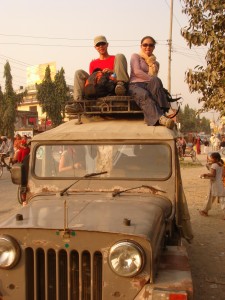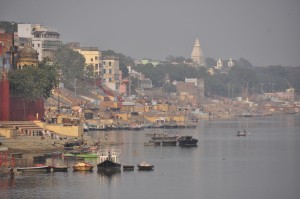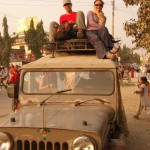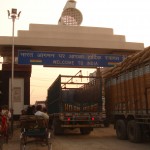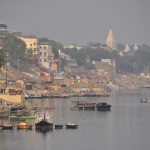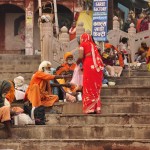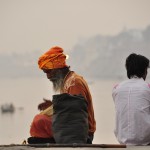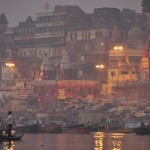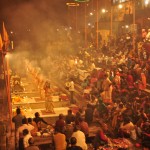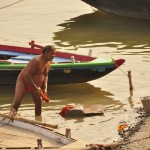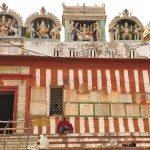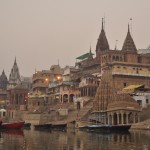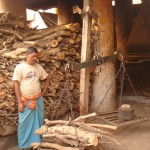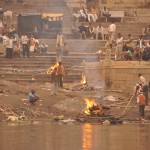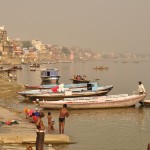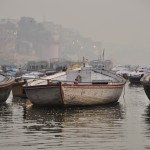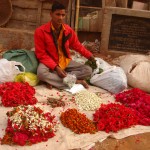Everyone says that ‘nothing really prepares you for India’, that sprawling explosion of humanity that is sole survivor to the world’s classic civilizations. We approached India full of tales of its extremes of poverty, destitution and turbulence; blended with the endless fascination of its mysticism, history, sights and religious fervours. Ideas all spiced perhaps by minor insights gleaned through intersecting interests in music, cricket, bollywood, Indian food and IT. Many people have told me that I would start loving India the moment I left and that this love would grow every day thereafter – an insight perhaps into both the trials ahead and the constitution of the purveyors of such advice 😉
With such advice ever present in our minds though, we entered India keenly excited to forge our own paths and tales, tempered I guess with a sense of expectation or even trepidation at the experience ahead. Surprisingly though this shock never really came and instead it has been superseded by an endless series of fascinating encounters and adventures, each uniquely amazing and engaging in its own right, but all strangely disappointing in their inability to match the dreaded hype. Perhaps though, we had simply just found the answer to that cryptic metaphor – nothing prepares you for India… except perhaps Nepal?
From the moment we crossed the Indian / Nepali border at Saunali & cautiously hastened to meet the India we had read, seen and heard so much about; we embarked on a series of escalations in crowd, colour and scale, somewhat equally balanced by an unexpected, but significant improvement in both safety and infrastructure from the Nepal that we had left behind. Having just survived the busride from hell from Pokhara, care of a drunk demonically possessed, mobile wielding driver; a journey that bonded its foreign passengers for life through the shared miracle of survival. Thus connected, we teamed up with a Canadian couple in Lumbini (birthplace of Buddha) for the walk across the Indian border and having been forewarned by a Japanese woman about her friends being robbed by bandits on the bus to Varanasi, we instead decided to grab a share jeep to Gorahkpur (2-3 hours away) to catch a train.
We had literally been in the country 10 minutes, when our jeep was pulled over by the local Mafia. A large, well-built Indian wrenched open the door & proceeded to try and physically intimidate us into separating us from our train tickets (in order to buy new fake ones) or else be escorted from the country. Surprised, flustered and pissed at the confusing intrusion, we somehow managed to dodge the scam and pull away in a heightened state of tense, nervy euphoria. The rest of the passengers in the jeep (mostly Indians & Nepali’s) simply sat there placidly throughout, pretending as though nothing out of the ordinary had happened & perhaps that was the case. Welcome to India!
After an otherwise uneventful and almost enjoyable drive through hazy, rural plains (Indian roads were a vast improvement on Nepali roads & buses) we reached Gorahkpur where we caught an overnight train to Varanasi, a trip of some 10 hours. At Varanasi station, as we waited to book ongoing tickets at the tourist office before embarking – tales from other travellers began to float to the surface, (this seems to happen almost religiously among travellers in India). After numerous warnings about the scams awaiting us outside the door, one Spanish guy then told us how had been taken aside by an Indian guy in uniform at Delhi station and escorted to an official looking room on the station platform where they forced him into booking an expensive hotel, train and taxi to the value of US$300. (None of which existed) – the taxi then dropped him off in the middle of nowhere. Another British girl then told us how she had been on a bus when the driver had hit and killed a person on the road. The angered villagers had then stormed the bus, pulled the driver off and beaten him to death. Her advice if we ever witness an accident – don’t hang around to watch, get out of there as soon as you can (something we ignored a short time later when our rickshaw driver hit someone in a crowded market and got pulled out of his seat and into a fist fight)!
Coupled with our own paranoia though, these stories seemed to resonate seamlessly with the ominous threat posed by the vulture like heads of the rickshaw touts, as they repeatedly peered into the windows of the station booking office at us – sensing fresh prey. With nowhere further to hide and working as a four team unit with our Canadian friends Jo & Ian, we took some deep breaths, shouldered our packs and plunged into the ether of Varanasi station and our first real taste of India.
Varanasi is India’s holiest, oldest and most confronting city. From the moment you leave the station, rickshaw touts & taxis maul you for attention. Later hotel and boat touts, begging Sadhu’s, kids selling flowers / candles, street food vendors or the ‘hand massage’ scam guys – all take turns to hound you as you walk anywhere around the old city or along the river itself. A thriving, dirty congested ancient metropolis built in a labyrinth along the river Ganges – the city confounds in its many sights. All day (and night) bodies burn on wooden funeral pyres or are simply dumped from the back of a boat into the same river that people bathe, worship, wash & dry bright fabrics and clothes, scrub their cows or any other of a seemingly endless litany of purifications and activities that mark its steps (ghats). By sunset the main ghats resound with lights, smoke, bells and music of the nightly Puja’s where costumed young androgynous men, perform a series of dances and ritualized ceremonies in front of thousands of guests both onshore and in row boats, against the dark backdrop of floating candles and distant embers of funeral pyres. Back from the ghats and river itself, a confusion of thin, cow clogged alleys and passageways link a fascinating treasure trove of temples, guesthouses, cafe’s, shops, music / yoga studio’s and innumerable other mysterious old buildings. Locals and tourists alike whisper rumours of this guru or that spiritual baba being in town, in much the same way western actors stir gossip in the daily tabloids.
Yet, with all this, Varanasi resonates with an over-riding peaceful and relaxing energy- it offers a sense of purity and spiritual magnetism that intoxicates you. Drunk with its sights and experiences, it is not nearly as shocking as we had imagined and once you slow down and relax into its pace – you become enchanted by the cycles of death and everyday life endlessly paraded on its shores. The ability to sit with a chai or some street food; chat to a Sadhu; enjoy lunch from the many wonderful cafe’s; watch a tabla or sitar performance or more often simply mediate and contemplate Varanasi’s many sights and wonders is balancing all in itself. Street side harassments give way to fun and creative interplay and as you tune into this more and more, the chaos starts to fade away and everything settles into its own rhythm – even the touts, kids and sadhu’s start to recognize you and keep their distance.
Now, almost 8 weeks later and with many more cities, trains, hotels and religious sites under our belt – India has only become more enjoyable this way. All that heightened tension and expectation has slowly unravelled into pleasant interactions. The India we have encountered is alive with colour, diversity, endless contradictions, fun and a strong spiritual presence that is completely hypnotic and more than enough compensation for the clamouring crowds, deceits and dodgy water – its primary detractions…
- Jeep ride to the Border
- Varanasi
![Encountering India Everyone says that ‘nothing really prepares you for India’, that sprawling explosion of humanity that is sole survivor to the world’s classic civilizations. We approached […]](http://meltingplots.com/wp-content/uploads/2009/12/DSC6521.jpg)
